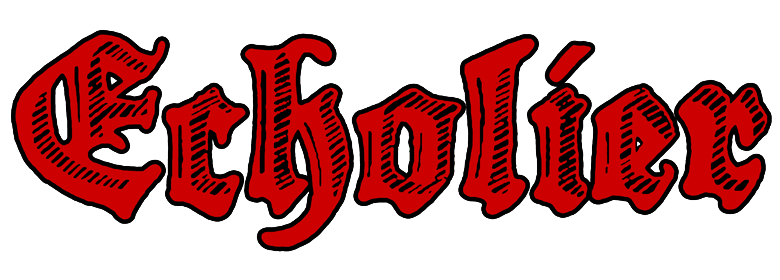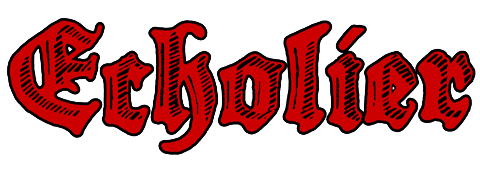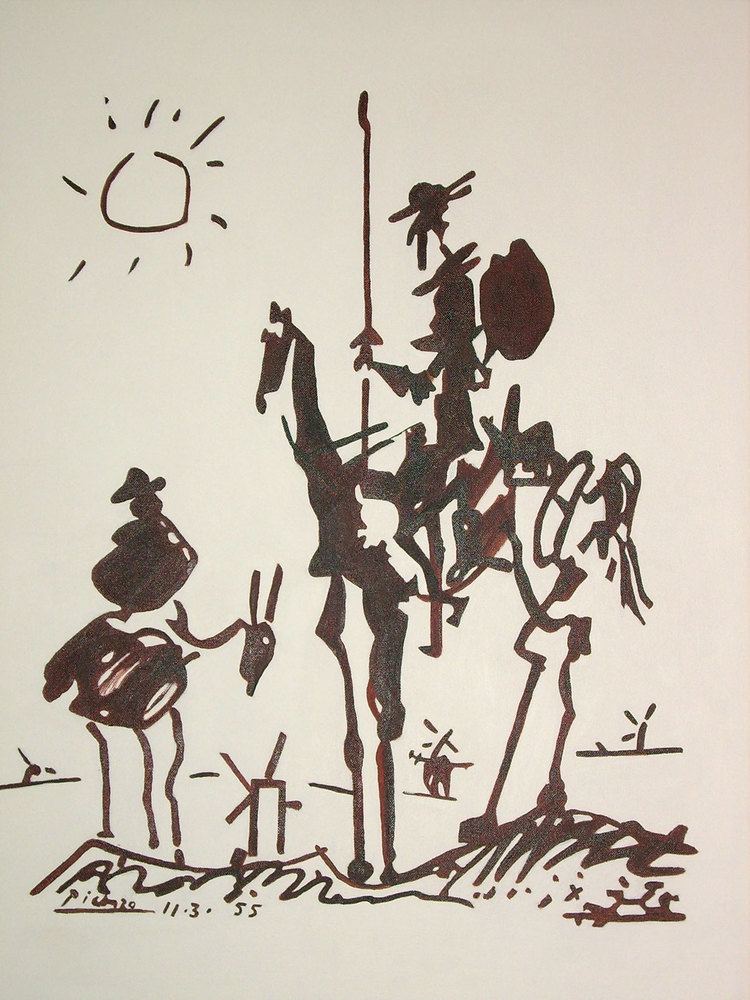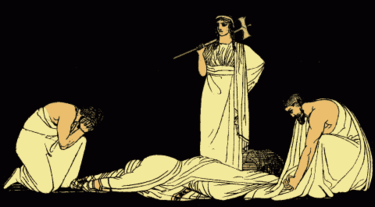Published in 1605 with a subsequent part published in 1615 by Spanish author Miguel de Cervantes, The Ingenious Gentleman Don Quixote of La Mancha, commonly known as Don Quixote, could be argued to be THE most important novel written in the Spanish language. Conceived originally by Cervantes to parody Chivalric literature (literature having to do with knights errant, chivalry, and honor), Don Quixote sets itself as one of the most read pieces of literature in the world and is highly regarded in the western literary canon.
Even if you aren’t into classic literature, or books at all, you have no doubt heard the name Don Quixote. This is due to number one: Mrs. Hunt-Inostroza showing us a TED-Ed video on “Why you should read ‘Don Quixote’” to illustrate the meaning of the vocab word “quixotic” and number two: Don Quixote is a massive influence on modern-day pop culture. Many modern-day tropes that we are familiar with first show up in Don Quixote, primarily what we call the comedy duo, taking form in the unreasonable Quixote and the grounded Sancho. You can also attribute the “born in the wrong century” trope to Quixote, as well as the “idealistic fool” or the “delusional dreamer,” all of which culminate in the term Quixotic. Apart from literature, Don Quixote has also influenced language (not surprisingly). Phrases like “Tilting at Windmills,” which signifies someone fighting made-up enemies, and characters from the story coming to be used as descriptive words. Such an example is that of Dulcinea, coming to be used to describe unattainable ideas of women. The noble squire Sancho’s name is used to describe loyal and rational sidekicks. Even Quixote’s “noble steed” Rocinante, became used to describe old and worn down horses. From movies, television shows, and theatre, the story of Don Quixote has been told and retold time and time again. But it must be asked: how does the original story hold up?
Weighing in at 900 pages, the novel is in two parts: the first, published in 1605, and then the second part which was published as a response to the success of the first one, in 1615. This review is focused solely on the first part. No spoilers.
For a book that is over 400 years old, Don Quixote is some of the funniest writing that I’ve encountered. As mentioned previously, Cervantes wrote Don Quixote as a comedic satire on chivalric romances. What do you do when all monster movies take themselves too seriously? You make Young Frankenstein. What do you do when you’re sick of Hollywood’s endless dramatic spy movies? You make Johnny English. To a certain extent, this is what Cervantes did with Don Quixote. However, despite its age, the humor in this book holds up well by modern standards. Quixote is described as a book-obsessed insomniac: “Finally, from so little sleeping and so much reading, his brain dried up and he went completely out of his mind.” Which is probably a common refrain from many CA students around finals.
The book’s comedic genius is shown largely in the dialogue: For example, Sancho, Quixote’s long-suffering squire says, “Whether the pitcher hits the stone or the stone hits the pitcher, it’s bad for the pitcher.” Apart from the quote showing good wisdom coming from Sancho, it conveys a subtle humor. Cervantes masterfully gives each of his characters distinct traits and personalities. This allows for many interesting moments of dialogue and conversation which are not only satisfying to read, but are also crammed with delightful humor. Most of the humor, however, stems from the character of Don Quixote and all of his stupid and obnoxious feats. The setup of Don Quixote is that a manchegan man, or a man from the Spanish region of La Mancha, reads so many books on knights and chivalry, that he goes insane and he convinces himself that he, too, is a knight. Don Quixote leaves his home village in search of adventure and his made up love, Dulcinea of Toboso. He takes his “noble steed” Rocinante, actually a half-starved and weary horse, along with him. Later on in the novel Quixote teams up with, his neighbor, Sancho Panza who serves as Quixote’s squire. Together, the trio (and Sancho’s donkey), embark on adventures that lead them far from home.
Overall, the first part of Don Quixote is an exemplary parody. Cervantes pokes fun at every aspect of chivalric literature and namedrops many real titles and authors who he is mocking. The prologue to the book itself parodies the long and boring prologues of chivalric novels and Cervantes makes great use of his characters, primarily the priest, one of Quixote’s close friends and neighbors, to shade and ridicule said literature. Said he, when “cleansing” Don Quixote’s personal library: “This one here is called ‘The Mirror of Chivalry.’ I know it well…It must go down into the depths of the abyss.” (There are many best-sellers that would also benefit from this treatment).
Considering its age, I was surprised at how funny and entertaining this book was. I enjoyed reading this first part and found the pacing well done. The framing device for Don Quixote is that the story’s narrator is translating a manuscript he discovered written in Arabic by a man called Cide Hamete Benengeli (his name being a pun involving eggplants). During the duration of this first part, characters involved in the A-plot (that being of Don Quixote) meet with different characters who tell them about their own stories. At times, this culminates in a story within a story. In some parts, the whole A-plot is paused to solve other plot points involving characters unrelated to Don Quixote. This, I believe, is the novel’s weakest spot, though it is refreshing to hear about other stuff besides Quixote and his stupidity.
Overall, I enjoyed this first part of Don Quixote and am excited to read further on and see for myself how this story concludes. Although not perfect, I enjoyed the time I spent reading and don’t regret doing so (like in other books…Anna Karenina…). If I were to rate this first part by itself, I would give it four stars out of five.
Thanks for reading.















Sophia • Aug 17, 2024 at 11:45 am
I actually laughed reading this, now I have to go pick up don Quixote and read it for myself